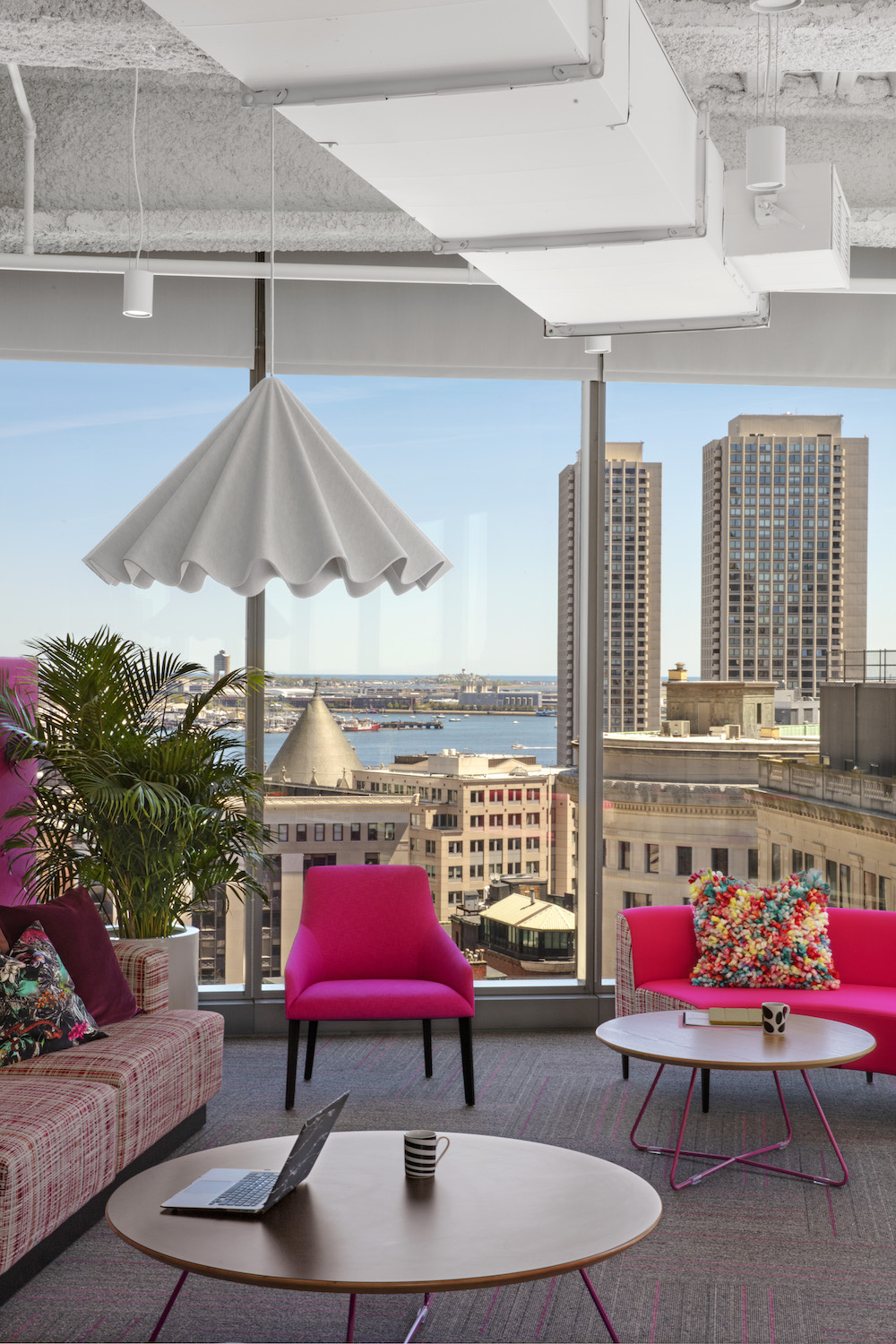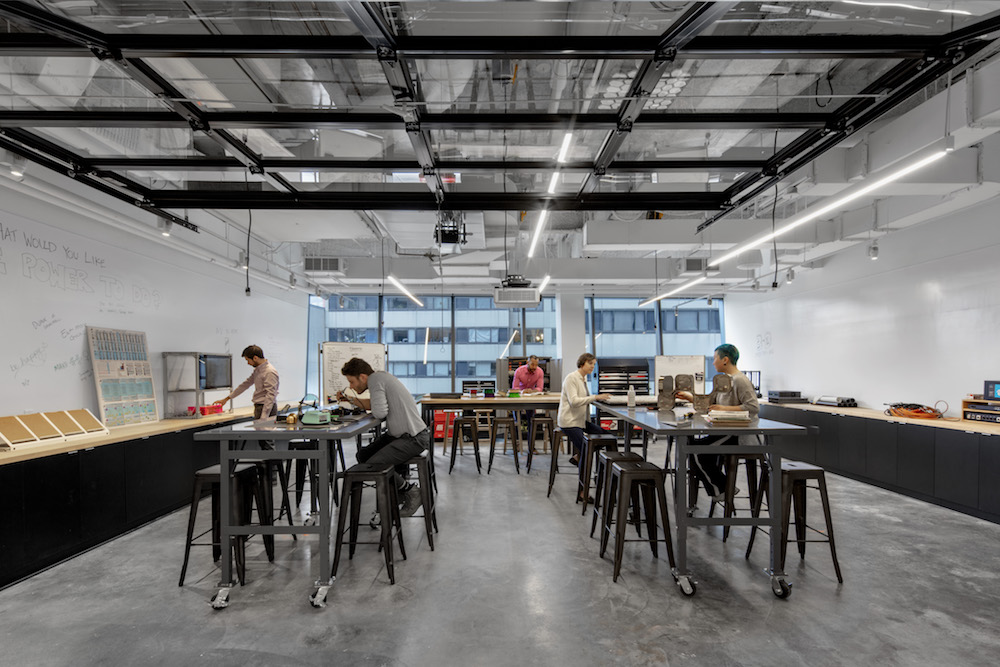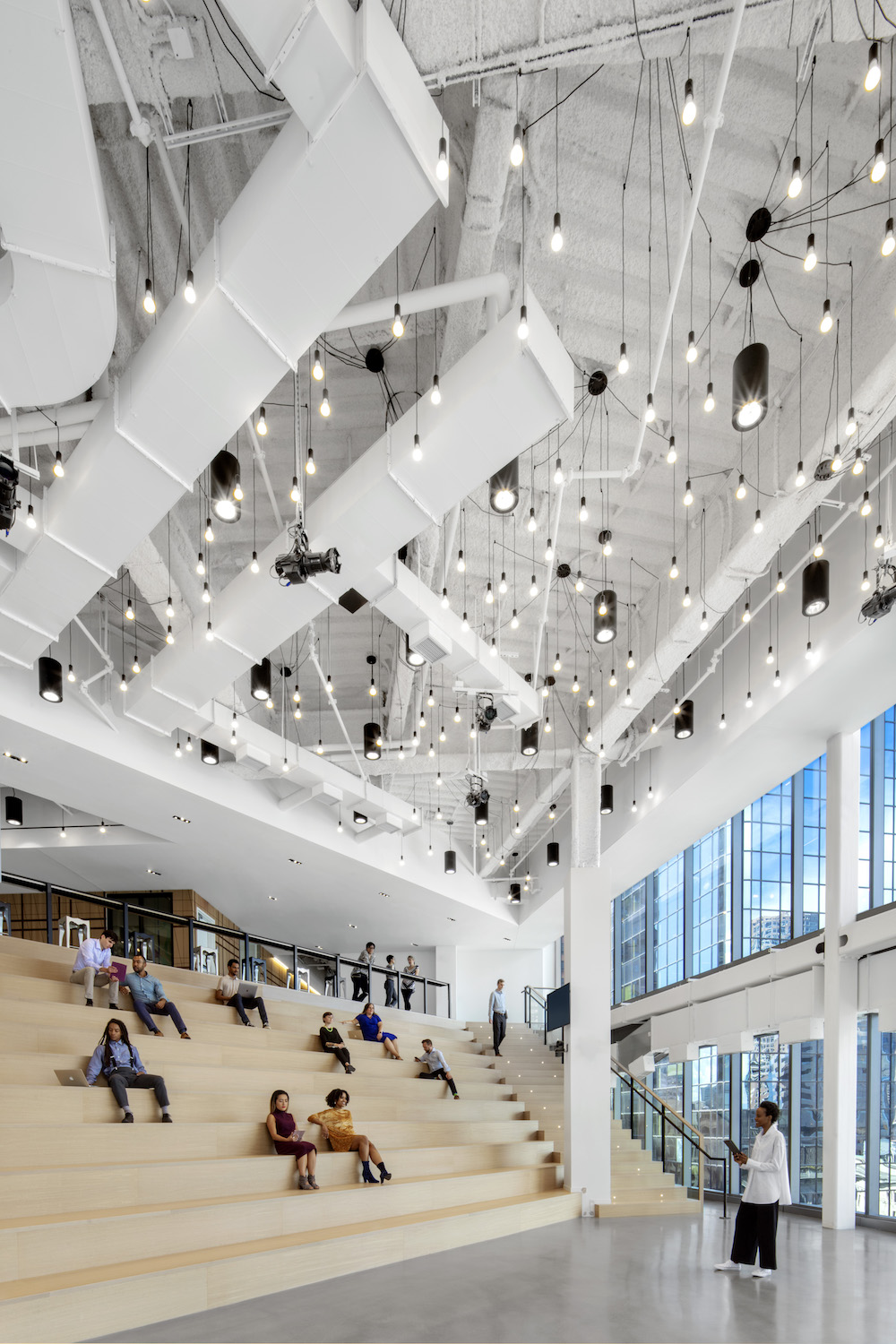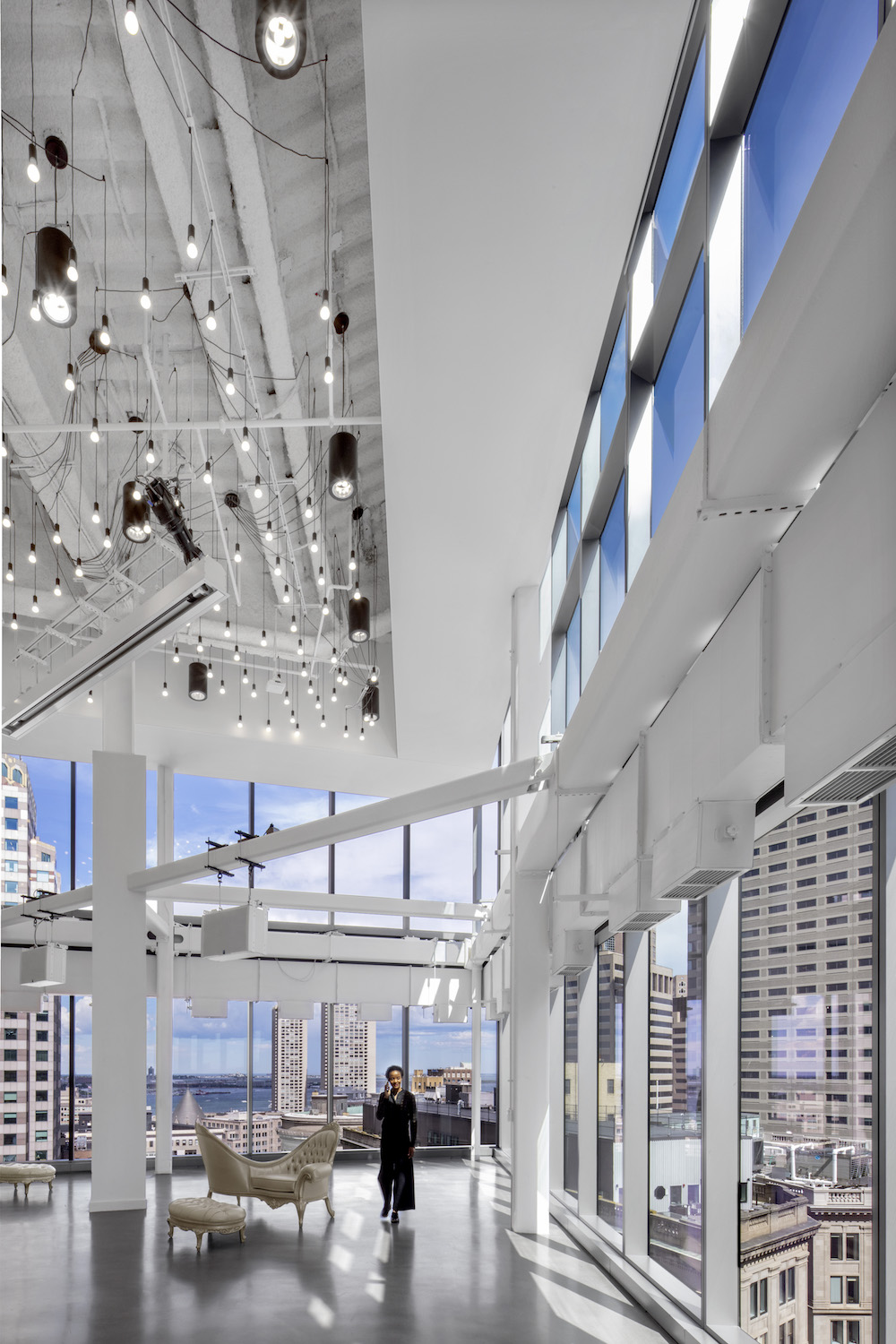Traditional workplace design often underutilizes input from the very source it needs the most – employees. Employees know exactly what they need to be more productive, efficient, and collaborative in their workplace. They hold the secret to how to build a successful company culture. The co-creation process uses a company’s greatest resource, its staff, to deliver workspaces that fulfill employees’ need for greater engagement, control, and support, while also meeting company leadership’s imperatives to ignite innovation, productivity, and the recruitment of top talent.
The workplace has always been the corporate culture-keeper, but COVID-19 has proven that people can work remotely. Hybrid working is here to stay, so workplaces must become even better culture-builders to be places people choose to be. Co-creation is another tool that strengthens company culture. Whether conducted in person or remotely, co-creation is about inclusion, which in turn builds the community so essential to a resilient culture.
This is the story of one company’s success in applying co-creation to the design of its new workplace. While completed pre-COVID-19, the space offers valuable lessons that reinforce companies’ resilience, both now during the pandemic and as the future unfolds.
The Client – Publicis Groupe
Publicis Groupe, the world’s third largest marketing and communications company, leverages the collective creativity of over 80,000 talented employees in 20 companies into one connected workforce, reflecting the company’s vision of “The Power of One.” For its team in Boston, Publicis Groupe sought a new workplace that would bring seven companies – Digitas, GroupeConnect, Publicis Sapient, MSL, Re:Sources, Publicis Media, and Epsilon – and their 1,500 employees together under one roof. Publicis selected Elkus Manfredi to design an inspiring new workplace that would maximize innovative thought.

The Co-Creation Process
As the project began, Elkus Manfredi used the co-creation process, taking the role of listener and facilitator to engage Publicis leadership and cross-functional employees from all levels, using a methodology that brings end users together to brainstorm about making their workspace more efficient, more supportive of their work, and a better incubator for creative innovation. Combining data-driven analytical strength with flexibility, the co-creation process was an ideal method by which designers and users could develop a design that would bring seven individual company cultures together as one workforce.
Co-creation regards every stakeholder as a creative contributor without hierarchical limits to their input. Companies possess much untapped raw material – data, experience, narrative, culture. Anyone, from the most junior line employee to the most senior executive, can provide key insights to a successful project.
Complexity expert Chris Clearfield says, “The antidote to complexity is not simplicity – it’s transparency.” Co-creation incorporates complex data and insights in a transparent, inclusive process that utilizes techniques of open innovation:
- Set clear goals but seek flexible solutions
- Gather insights from individuals inside and outside traditional decision-making circles
- Facilitate collaboration, openly discussing problems, challenges, and tradeoffs with all stakeholders
- Discover and include a wide diversity of opinion, experience, skills, and perspectives
- Prototype, test, and revise ideas quickly with end users
- Document the creative process and share openly

How Co-Creation Worked at Publicis
Over 12 months, Elkus Manfredi engaged Publicis leadership and employees at every level in every brand to co-create the spaces in which they would work. Folding 1,500 people into the process as creative contributors, designers conceived and led a robust, immersive process, diving deep into the habits, needs, opportunities, aspirations, frustrations, and insights employees and management could share about their work environment. Input was gathered on factors ranging from culture and work settings to furniture and finish selections.
Designers met with Publicis leadership to set requirements, budgets, schedules, and a broad vision for the project. The vision that emerged? A workplace that would inspire and motivate staff, “wow” clients, and function as a place for cross-brand teams to maximize their creativity.
Designers then identified a steering committee, capability leaders, and cross-company employee ambassadors, and established ten task forces, each assigned one aspect of the new workplace:
- Wow – client and presentation spaces, front door, reception
- Joy at Work – social and wellness spaces: food, amenities, fitness, events
- Work Talk – work guidelines and communications to support the new work style
- Tech Talk – technology in all areas
- What We Make – R&D spaces, tech labs, maker spaces
- Team Work – internal collaboration spaces: meeting, war, and project rooms open and closed, confidential
- Solo Work – internal personal spaces: desk, focus booth, deep work area
- Special Teams – specialty support: photo studio, video editing, print production, color correction, focus groups
- Change Champions – all staff communications
- Green Team – sustainability
The process unleashed a flood of ideas capturing the authentic experience and creative inspirations of the Publicis Groupe workforce.

The Design
For its new workplace, Publicis had selected a 215,000-sf, 11-floor space in downtown Boston consisting of five restored historic buildings that had been knit together and topped with a modern glass addition. The design weaves old and new into a connected whole featuring a tapestry of themes reflecting the seven distinct brand identities – something that feedback had made clear was very important to the Boston workforce. While celebrating each brand, the culture-shifting, 100% activity-based workplace also remains coherent from floor to floor – key to activity-based working – with vertical stacking of program elements, consistent layout of spaces, and an overarching graphic program.
Workplace concepts:
- neighborhood configurations
- anchor support areas
- unique work lounges on each floor
- release-a-room technology to manage reservations
- follow-me printing so employees can work anywhere
- virtual audio-visual concierge
- immersive cloud-based collaborative workspaces
- wireless presentations
- orientation and etiquette guidebook
Amenity spaces:
- two-story amphitheater
- café
- makers’ lab
- virtual reality room
- showcase theater to support client presentations
- conference center with reconfigurable walls

Each company occupies a floor that distinguishes its brand with unique furnishings, wall coverings, color palettes, and themes, all created based on employee feedback. Feedback had also made clear that the design needed to support employee choice of how to work, so the new office incorporates multiple workstyles, including places for focused quiet work and multiple collaboration spaces. Each brand works from a home neighborhood, and each of the brand-focused floors features a unique “joy space” café reflecting the culture of that floor. Staff members are encouraged to explore other brands for inspiration. Mobile technology allows for seamless transitions throughout.
The top two floors house reception, a conference center, a café serving fresh chef-made meals, and communal spaces for all employees. The reception area opens onto a two-story amphitheater with views of Boston Harbor – an ideal setting for office-wide meetings, client conferences, and presentations. In addition, reconfigurable meeting rooms, multi-function spaces, and a large rooftop terrace and lounge offer environments for collaboration, entertaining clients and visitors, or simply recharging.
Ultimately, the co-creation process achieved a flexible, highly functional workplace where Publicis employees feel at home and can do their best work. It inspired an array of eclectic, energetic workspaces grouped within team-based neighborhoods and connected to the whole. Such an inviting workplace not only creates an environment where employees want to come to work, but also serves as a valuable recruitment tool to attract talent and new business.

The Power of Co-Creation
Co-creation is designed to unleash the hidden creativity, opportunities, and unique cultures of companies to create flexible, human-centric workplaces. It addresses elements of successful workplace design that are often not associated with architecture, such as culture management, open innovation, and agility. Finally, co-creation manages change early on by empowering employees to take part in designing their own workspace. Feeling heard, being heard – these are powerful tools. Greater engagement equals a greater sense of ownership and personal investment, and eliminates resistance to change. Employees who participate in the design of their own workspaces show greater engagement and satisfaction in response to their employer’s trust in their judgment. Employers who embrace the co-creation process make the most of their real estate investment.
Now, after COVID-19 has altered so much about our lives, the Publicis workplace continues to demonstrate the value of co-creation. Agile and resilient, it has the ability to pivot and stretch to accommodate the new workplace safety precautions required due to the pandemic. The co-creation process itself opened up new pathways of communication – between leadership and employees and among employees coming from different brands – that built trust, strengthened culture, and made it easier to work together to adapt to the impacts of the pandemic.
Decisions made during the co-creation process have proven to be wise. The activity-based work environment has resulted in a resilient workspace that supports the agile activities needed today. Bridging business goals, user needs, and design goals is the heart of the co-creation process, making it the ideal vehicle to meet the needs of today’s corporate leaders and their employees. Before the pandemic struck, today in the midst of the crisis, and as we move forward, the Publicis workplace is a powerful tool that will support and advance innovation far into the future.

Recent Comments